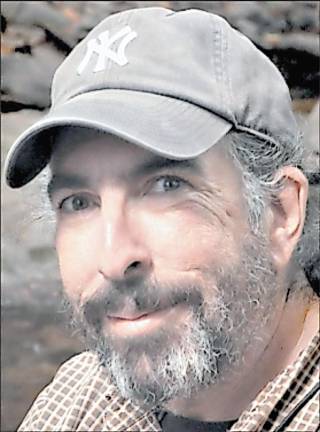Robust conservation along the Upper Delaware has many benefits
Delaware River. The River Unites Us offer stories about the Scenic Wild Delaware River by those who know it best. This month’s column features Steven Schwartz, who works in the Upper Delaware Watershed and truly lives this quote: “Many Sources, One Watershed Community."

The River Unites Us: How would you describe the work you do?
Steve Schwartz: Fifty years ago, Peter Berg, of the Planet Drum Foundation, coined the term bioregion. A bioregion is defined in terms of the unique overall pattern of natural characteristics that are found in a specific place. The main features are generally found throughout a continuous geographic terrain and include a particular climate, local aspects of seasons, landforms, watersheds, soils, and native plants and animals. People are also counted as an integral aspect of a place’s life, as can be seen in the ecologically adaptive cultures of early inhabitants, and in the activities of present-day re-inhabitants who attempt to harmonize in a sustainable way with the place where they live. I live in, enjoy, and work to promote the multiple values, qualities and opportunities to conserve and enhance the social, ecological and sustainable economic diversity of the Upper Delaware Bioregion.
The River Unites Us: As a geotourism program, the Scenic Wild Delaware River program encourages travelers to visit local businesses and outdoor sites that offer an authentic experience about the region’s natural, cultural, and historical assets. How does your work fit in with this?
Steven Schwartz: As the co-coordinator of the Poconos-Kittatinny Cluster of the Delaware River Watershed Initiative that fosters the collaboration of eight conservation organizations working in Wayne, Pike and Monroe counties, Pa., and Orange and Sullivan counties, N.Y., I help form partnerships and connections. These organizations conserve land and community resources, produce interpretative workshops and tours for individuals and families, and provide technical assistance to municipalities and private landowners under coordinated strategies and funding in collaboration with many other regional stakeholders.
The River Unites Us: What economic benefits does conservation bring to the local community?
Steven Schwartz: Multiple Return on the Environment studies have shown that robust conservation has multiple benefits for the community from job and business creation in the recreation and tourism sectors to higher private land values through proper stewardship to the ability to enjoy clean drinking water without expensive treatment to the resiliency of infrastructure through proactive watershed management mitigating expensive restoration after flooding events.
The River Unites Us: Much of your work involves partnerships with private property owners. What are some challenges you encounter in trying to balance conservation with the concerns of private property owners?
Steven Schwartz: All of the work we do, from acquiring conservation easements to land management of forests and wetlands on private property, is voluntary. Private property owners embrace conservation when they recognize that their stewardship improves their property as well as their downstream neighbors and they become advocates for the same enlightened self-interest.
The River Unites Us: Finally, tell us some of the “Must See and Experience”places that you recommend for travelers that can be found at scenicwilddelawareriver.com
Steven Schwartz: My corner of the watershed has fantastic local places for the angler – Delaware River Club, West Branch Angler; the foodie – Callicoon Farmers Market,Equinunk General Store; the fun lover – Equinunk Historical Society with its amazing Joel Hill Water Powered Sawmill, Callicoon Theater, Farm Arts Collective; and so much more!
Editor's note: Sharon Davis is the Delaware River program manager of the National Parks Conservation Association and may be contacted at sdavis@npca.org.